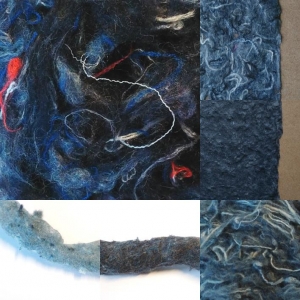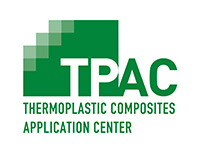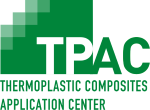Sustainable thinking and environmental awareness are growing for societal and economic reasons. Therefore the reuse of reclaimed and bio-based materials receives increasing attention. Recently, the TPAC concluded the DECOREC project co-financed by the Taskforce for Applied Research (SIA). The project was executed in collaboration with Tiwánee van der Horst and Gebr. van der Geest. The main objective was the development of polymeric applications with appealing surface properties using reclaimed textile fibres, particularly for interior use. Recycled petrochemical polymers and water soluble biopolymers as matrix material were of main interest. A major problem when using recycled polymers are their aesthetic properties, such as the greyish colour and superficial unevenness due to small contaminations.

Textile waste is generally broken into fibres by shredding and milling. Dependent on material type and origin yarns can have a length between 8 and 250 mm. Experiments showed that fibres longer than 10 mm were difficult or even impossible to process by extrusion. However compounds with maximal fibre lengths of 10 mm and fibre mass fractions of up to 50% could be extruded. The surface haptics of this extrudate is similar to felt. But fibre contents higher than 30% embrittle the polymer structure. Moreover it was shown that short fibres can be deposited onto the polymeric surface during extrusion. The resulting surface can be compared to textile flock.
Water soluble biobased materials were used to produce different wall coverings. The main advantage of a water soluble matrix material is the possibility to easily remove the covering from walls and in addition reuse the reclaimed fibres. Long fibre filled coverings similar to wall paper can be produced with a hard or soft haptic by calendaring. Fibre lengths of 4-8 mm prepared using a cutting mill facilitate stir mixing of fibre filled pastes, which can be applied on walls using plaster sprayers.
Results of the DECOREC project are promising and offer various possibilities for decorative applications, such as interior wall designs or portable extruded room dividers.

